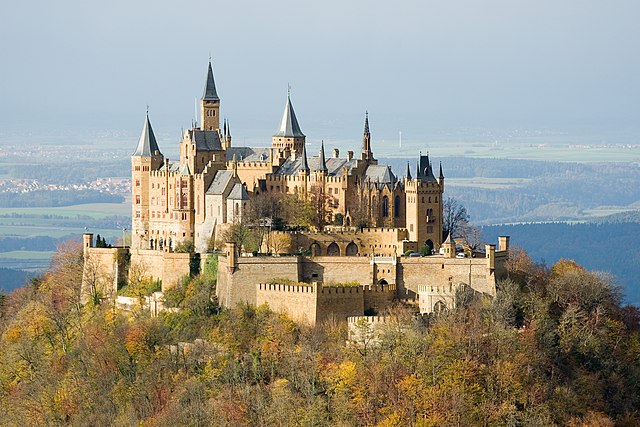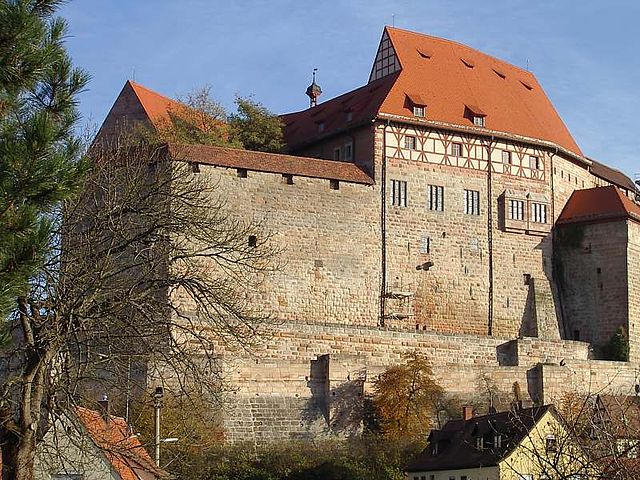Hohenzollern-Sigmaringen was a principality in southwestern Germany. Its rulers belonged to the senior Swabian branch of the House of Hohenzollern. The Swabian Hohenzollerns were elevated to princes in 1623. The small sovereign state with the capital city of Sigmaringen was annexed to the Kingdom of Prussia in 1850 following the abdication of its sovereign in the wake of the revolutions of 1848, then became part of the newly created Province of Hohenzollern.
Sigmaringen Castle
Karl Friedrich, Prince of Hohenzollern, head of the Swabian branch of the House of Hohenzollern
Combined coat of arms of the House of Hohenzollern-Sigmaringen (1849)
Leopold, Prince of Hohenzollern
The House of Hohenzollern is a formerly royal German dynasty whose members were variously princes, electors, kings and emperors of Hohenzollern, Brandenburg, Prussia, the German Empire, and Romania. The family came from the area around the town of Hechingen in Swabia during the late 11th century and took their name from Hohenzollern Castle. The first ancestors of the Hohenzollerns were mentioned in 1061.
Hohenzollern Castle, near Hechingen, was built in the mid-19th century by Frederick William IV of Prussia on the remains of the castle founded in the early 11th century.
Alpirsbach Abbey, founded by the Hohenzollerns in 1095
Nuremberg Castle (the Emperor's castle, left, and the Burgrave's castle, right)
Cadolzburg Castle near Nuremberg (from 1260 seat of the Burgraves)








